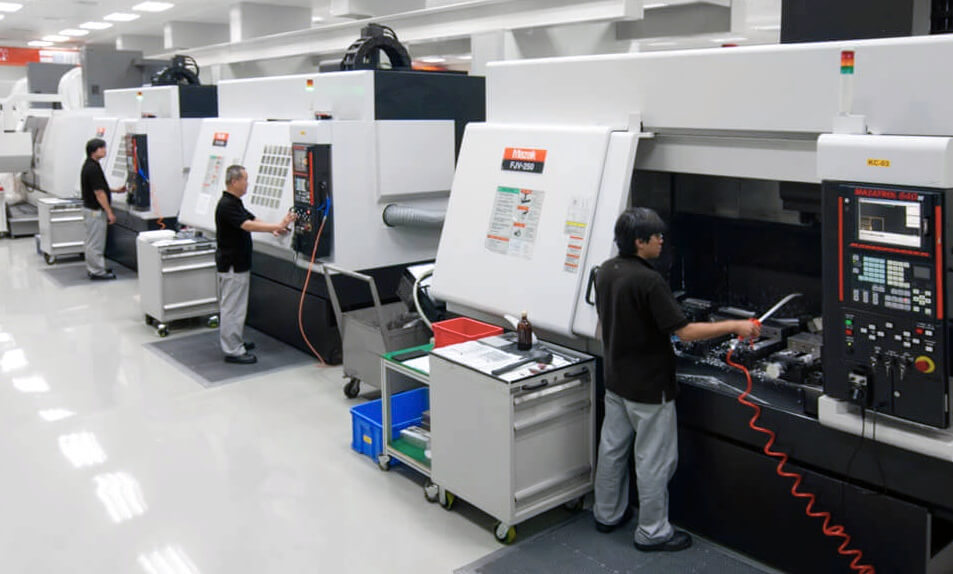- CNC Precision Machining Parts China Manufacturer and Supplier
- +1 707-684-2707
- +86 130 6186 5801
- [email protected]
CNC Machining Parts Design Guide-Limitations
CNC Machining Parts Design Guide-Material Selection
6月 25, 2016CNC Machining Parts Design Guide-Threads
7月 7, 2016CNC Machining Parts Design Guide-Limitations

Interior Fillets
When using a milling machine, because the milling tool is round and rotating with high speed to remove the material, all interior vertical walls must have a radius. Designers need to be careful where radii will occur because of the limitation.
Inside Corner Fillets
For inside corner radius, it is better to use a non-standard one. Because end mills need clearance to turn and continue milling when tracing the internal corner (see Fig. 1).
If a 0.25” interior radius is required, the standard end mill will hammer the corner, will stop completely, and then pivot 90 degrees and resume cutting. The machining speed will be slower and the cost will be added, and also causes/chatter marks. By adding a 0.02” (0.508mm) - 0.05” (1.27mm) to internal radius, the cutter will be able to turn slightly without coming to a completely stop. This will be not only cost-saving, but also improve CNC parts (see Fig. 2).
The larger the radius, the larger tool can be used and more material can be removed every circles, machining time could be reduced and also does the cost. For example, in the illustration to the left (see Fig. 3), using a tool with a 0.125” diameter (0.063” radius) would take approximately 1.5 times longer than using a 0.187” diameter tool and approximately 2 times longer than a 0.250” diameter tool.
Even though small radius tools (down to a .015” radius) are available, sometimes it is also impossible to produce because of the depth and the tool will not manufacture. If the tool is manufactured, only small cuts can be made, the machining time and cost will also be added.
When the depth need to be cut is larger than 2 times of the diameter of the cutting tool, then the feed rate of the tool need to be slowed down and the cycle time and costs will be increased. For every doubling of the length of cut, feed rate is more than halved, which more than doubles the time to cut the feature. The max cut depth to tool diameter ratio is 6 times.If more, a special tool will be required. For example, if a 0.125” diameter tool is used then the max cut depth should be 0.750” .

Floor Fillets
When creating a floor radius that meets a corner, it is much easier to machine if the floor radius remains smaller than the corner radius. With CAD softwares, it is easy for the designer to use the computer to generate the same size floor and wall radius, but this makes it hard to remove the material in the corner. By having the floor radius smaller than the vertical wall radius, the same tool can be used to remove the material and create a smooth surface on the corner.
Undercuts
During the design process, some features are created where a standard machining tool can't reach, thus an undercut region should be created.
Cares must be taken when designing the undercuts.
1, It may require a special tool if the feature is not a standard dimensions. In the example below, the radius in the slot is 0.053”. A costly custom tool would be required to create the structure. So the cost of the part will increase to a high level, especially if only a few parts need to be manufactured. If a standard .062” radius is used, then the cost of the tool would be less than customed.
2, During the designing process, designers must make sure that the undercut should not be too deep or can't be reached. Because a horizontal cutting blade has to attach to the vertical shaft, there are limits to the depth of the cut. There is no hard and fast rule to the depth of the undercut, but it will be better if the undercut is shallower. Also, when designing the undercut feature, it is critical to only create undercuts in areas where the tool can reach. You can find a sample of undercut feature that cannot be produced in the picture below.


